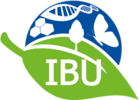Kontakt
Institut für Biologie und Umweltwissenschaften (IBU) (» Postanschrift)
Karte
Carmen Alicia Rivera Perez
Wissenschaftlerin
I am an ecologist interested in the interaction dynamics between fungi and plants under changing environmental conditions. Currently, I am investigating the interactions between fungi and plants in a salt marsh of Spiekeroog. I work together with Prof. Dr. Dirk Albach at the working group "Plant Biodiversity and Evolution" at the Carl von Ossietzky University of Oldenburg. Our project is part of the DFG-funded project "Spatial community ecology in highly dynamic landscapes: from island biogeography to metaecosystems (DynaCom)" which aims at understanding assembly and functioning of metacommunities from a trait-based point of view.
In our project, we mainly focus on the symbiosis between fungi and plants as a tolerance trait in the salt marsh. The salt marsh is a dynamic environment that is subject to inundation and drought cycles and is characterized by fluctuations in oxygen availability and salt concentration along an elevation gradient. Under these conditions, the organisms living in the salt marsh are required to possess certain tolerance mechanisms that enable them to thrive under low oxygen availability or increased salinity. One strategy that salt marsh plants have evolved is the symbiotic association with Dark Septate Endophytic (DSE) fungi (facultative biotrophs) and arbuscular mycorrhizal fungi (obligate biotrophs). Although these fungi are not easily visible in the salt marsh, they play essential roles in the ecological performance of plant species by influencing nutrient uptake and tolerance to abiotic stress. Since DSE fungi are known to possess remarkably heterogeneous genetic traits, depending on multiple factors like host identity, host age, or environmental parameters, the fungal partners may behave as beneficial or harmful symbionts. Thus, the fungal lifestyle may range from parasitic to mutualistic and even exhibit saprophytic behavior in different circumstances. This symbiotic spectrum might even be observable at the individual level and may be influenced by fungi-fungi interactions among taxa that co-occur with the same host. The complexity of these symbiotic systems makes it a challenging task to elucidate the functional contribution of fungi to the ecological stability of the salt marsh and we are working towards this goal.
At this point of our project we want to understand how plant-fungi symbiotic interactions operate in vivo in the salt marsh. To accomplish this, we will combine field experiments and greenhouse experiments to study the effect of salinity on the symbiosis between Salicornia europaea and associated fungal partners using metatranscriptomics. Thereby, we will gain insights of the fungal functional diversity from a molecular perspective and will be able to decipher the underlying mechanisms of salt tolerance in the symbiotic partners. Furthermore, in phase 2 and in collaboration with SP1 and SP3, we will study the spatial distribution of roots in the salt marsh and intensify the study of plant-animal interactions using metabarcoding and eDNA approaches to broaden our understanding of the salt marsh food webs.
Lebenslauf
- Since 2022 Research Assistant, University of Oldenburg, Germany.
- 2017-2021 Research Assistant, University of Göttingen, Germany.
- 2014-2017 MSc. Ecology, University of Bremen, Germany.
- 2011-2014 BSc. Biology, University of Wisconsin-La Crosse, USA.
Publikationen
mSystems, 2021.07.23.453179. https://doi.org/10.1128/mSystems.00957-21
Likulunga, E. L., Rivera Pérez, C. A., Schneider, D., Daniel, R., Polle, A. 2021. Tree species
composition and soil properties in pure and mixed beech-conifer stands drive soil fungal
communities. Forest Ecology and Management. https://doi.org/10.1016/j.foreco.2021.119709
Belby, Colin S., Rivera Pérez, C. A., Gerrish, Gretchen A. 2015. Understanding ecosystem
change in Upper Mississippi River backwaters through geochemical and biological analyses
of sediment cores. River Systems. 21: 163-181, http://dx.doi.org/10.1127/rs/2015/0102



